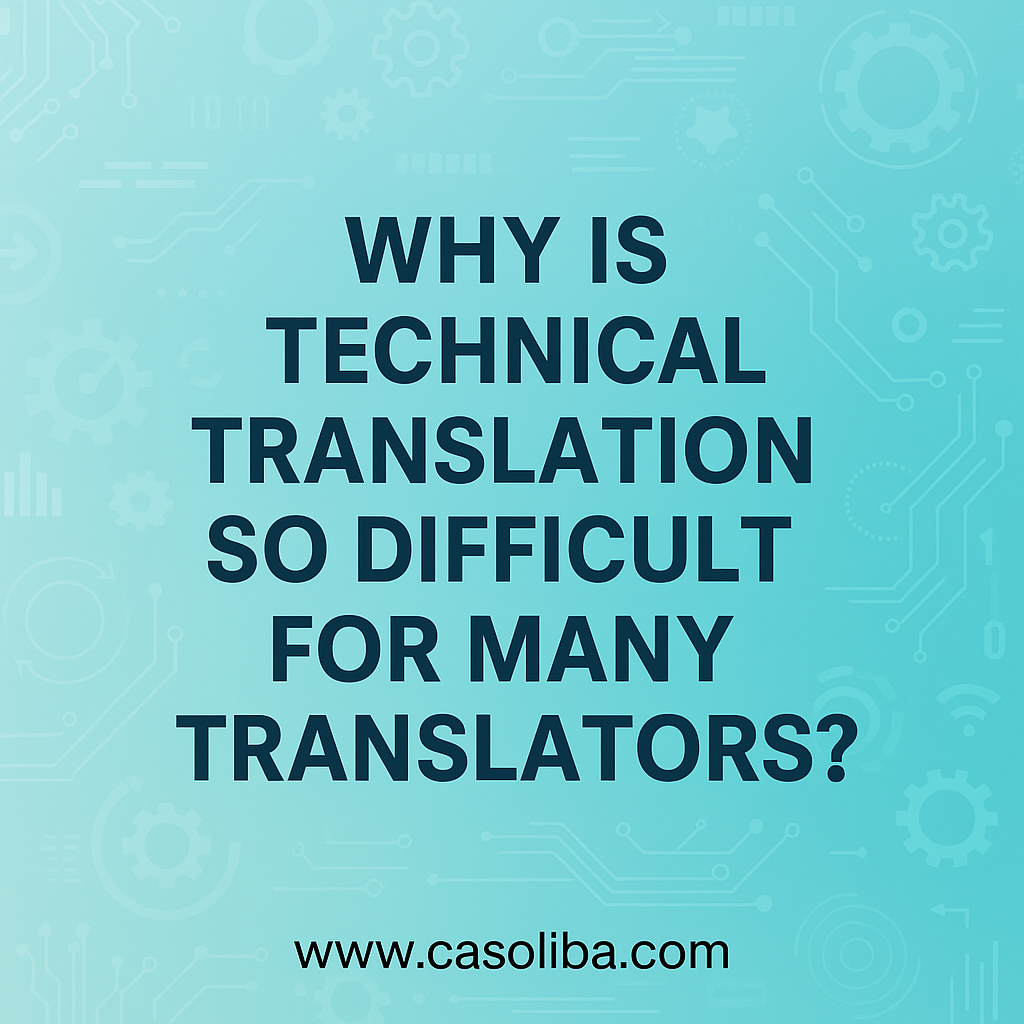Why is technical translation so difficult for many translators?
Why Technical Translation Is So Challenging
Discover why technical translation is demanding — from specialized terminology to high-stakes accuracy — and how experts overcome these challenges.
As a professional translator, I’ve seen first-hand how technical translation can challenge even experienced linguists. While some might think “it’s just translating words,” technical content involves far more than swapping vocabulary from one language to another. It demands a blend of linguistic mastery, subject-matter expertise, and meticulous attention to detail. Here’s why many translators struggle with it — and how those who succeed approach it differently.
1. Specialized Terminology
Technical texts — whether in engineering, medicine, IT, or law — are packed with terms that have precise, often non-negotiable meanings. Unlike general language, where synonyms might work, technical translation requires terminological precision. For example, translating “bearing” could mean cojinete (mechanical part) or rodamiento in Spanish, depending on the field. Choosing the wrong one can completely change the meaning or even cause costly errors.
2. Context Is Everything
Many technical terms are ambiguous without context. “Seal” could refer to a mechanical gasket, a security label, or an animal — and in a technical manual, guessing is not an option. Translators must fully understand how a component, process, or concept works to select the correct equivalent.
3. Constantly Evolving Fields
Technology, engineering, and science advance rapidly. A translator who last studied a term five years ago may find that industry now uses different nomenclature. Staying up to date requires ongoing research, reading specialist publications, and sometimes liaising directly with subject-matter experts.
4. Lack of Access to Reference Material
Technical translation often requires schematics, product drawings, manuals, or previous project documents for reference. Without these, translators may have to make assumptions — which can be dangerous. Missing context leads to higher error risk, and many companies underestimate how essential complete reference material is for accuracy.
5. Formatting and Non-Text Elements
Technical documents frequently contain tables, diagrams, labels, and CAD-exported captions. These elements may be tightly formatted, requiring the translator not only to translate but also to maintain layout integrity. Mistakes in a label or a schematic note can have practical consequences.
6. Quality Standards and Liability
Unlike general translations, technical translations often have direct legal, financial, or safety implications. A mistranslation in a medical device manual or chemical safety sheet can lead to injury, lawsuits, or product recalls. The stakes are high, which means translators must be rigorous with proofreading, terminology management, and adherence to relevant standards (like ISO 17100 or ASTM F2575).
7. The “Double Expertise” Requirement
Technical translation requires dual expertise: native-level linguistic skills and deep subject knowledge. Being fluent in a language doesn’t automatically mean one can translate a patent, a user manual for an MRI machine, or an API documentation. Many successful technical translators either come from the industry (engineers, scientists) or invest heavily in specialized training.
Final Thoughts
Technical translation is a discipline where precision, research skills, and industry knowledge matter as much as linguistic ability. It’s not a job for someone relying solely on a dictionary or machine translation — it’s a craft that demands care, responsibility, and continuous learning.
For clients, the takeaway is simple: if you need technical translation, choose a translator who understands the subject as well as the language. For translators, it’s a reminder that expanding technical expertise is just as important as sharpening language skills.

0 Comments Add a Comment?